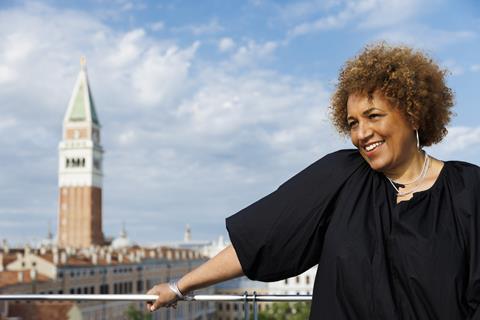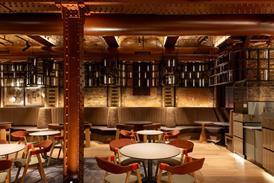Brought together by a shared experience of the industry, Black Females in Architecture has witnessed progress, but the need for it to exist remains as strong as ever, writes Ama Ofori-Darko

To be both black and female within the architectural industry is to occupy an intersection often accompanied by uncomfortable experiences and demoralising encounters. I have heard, first hand, from black women poised to leave the profession entirely after growing tired of being dismissed in architecture school or in the workplace. It was over occurrences like these that the founders of Black Females in Architecture (BFA) bonded.
Meeting by chance at an Architecture Foundation event and being taken aback by seeing so many (and by ‘so many’ I mean three) others like themselves in the same space, as BFA’s founders began speaking with one another, they realised many of the challenges experienced within their individual journeys were not individual at all.
In a bid to address the issues they saw, the network’s founders sought to create a nurturing space where the experiences of members are validated, and their aspirations are encouraged. As a result, Black Females in Architecture was founded in 2018. But, as the organisation enters its fifth year, how have the network and the wider industry evolved?
It’s fairly widely accepted that design practice in the UK has been slow to acknowledge its failure to nurture minority representation, which means navigating the industry as a black woman can be discouraging. At the macro scale, the statistics around our presence in the industry are unreflective of our presence in the population and even when our voices are ‘in the room’, questions are raised about whether certain environments truly facilitate our professional progression and enable us to thrive.
Light was shed on the challenges faced by black populations within the design industry
The reality is that BFA’s inception was indicative of a wider climate of frustration. 2020 was of course a watershed moment for a range of industries, with the year acting as a double edged sword in understanding black experiences and their relationship to the built environment.
Light was shed on the challenges faced by black populations within the design industry and issues were highlighted in sectors ranging from urban planning all the way through to architecture’s engagement within the arts and culture. At the same time, this increased awareness propelled numerous practices and organisations to interrogate how their structures and modes of practice may be perpetuating these problems, leading to the beginnings of various reforms in a productive direction.
For instance, in May 2020, Southwark Council announced a new framework of 110 architectural design teams for the delivery of public sector projects within the borough. Of the firms selected, very few were led by those from minority ethnic backgrounds and none by any black practitioners.
This is profound when we consider that 49% of Southwark’s population is minority ethnic and within this, 25.1% of the borough’s population is of African or Caribbean descent. Later that year, the framework was hailed as ill equipped to engage with the needs presented by the ward and calls were made for a consortium more reflective of the resident population.
The evolution of the design industry’s relationship to minority representation has not been linear
In response, 2021 saw Southwark Council introduce a ‘bolt-on’ to their roster of designers that exhibited, ‘… diverse leadership, an employee model that represents the diversity of London, lived experience of disadvantaged communities, success in bringing under-privileged and BAME architects/interns through their business, and the ability to relate to under-represented and hard-to-reach communities’.
The evolution of the design industry’s relationship to minority representation has not been linear, with periods of built-up frustration offset with moments of progress. But despite this, the cumulative headway made over the past 5 years both within BFA and out in the wider built environment is undeniably encouraging.

This progress is demonstrated in this year’s appointment of academic and novelist Lesley Lokko as the curator at the 18th International Architecture Exhibition of La Biennale di Venezia. She is the first black curator of the event and only the fourth woman to have ever been appointed.
Exploring themes of decolonisation and decarbonisation, Lokko has called on more than 80 participants to contribute to the exposition. Her invited participants present a 50/50 gender balance and over half of these contributors are either from Africa or within the African diaspora.
Having been invited by Lokko to the Curator’s Special Project, BFA is one of these contributors. This invitation to take part in the Biennale highlights the pertinence of BFA’s work alongside the call to support under-represented voices being recognised in influential architectural spheres.
Since its inception, BFA has amassed a growing membership base of over 450 students, designers, and spatial practitioners, illustrating a sustained demand for the support the network offers. Even five years on, there remains a need to both advocate for and celebrate black women in the built environment.
One thing that hasn’t changed is our intent to ensure that our membership and wider community of collaborators remains supported and to nurture the contribution they offer to the wider architectural landscape in any way we can.
Postscript
Ama Ofori-Darko is a member of the BFA Team, Part II Architectural Assistant and graduate of the University of Cambridge
















1 Readers' comment